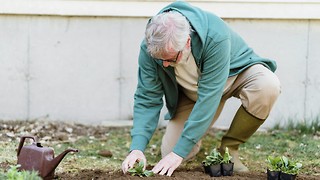Where’s Weiwei?
Sam Hunt looks back over a year of scare and support for the ‘world’s most powerful artist’

On 3rd April last year, the artist Ai Weiwei disappeared from public view. About to take a flight from Beijing airport, he was stopped and detained by Chinese officials, who took him into custody, not to be seen by the public eye for 81 days. No news of his whereabouts was released for days, until the Chinese government announced that he was being held under charges of “economic crimes”. Funnily enough, not many people are truly deceived, since Weiwei is currently one of the most controversial artists in China, speaking words the government would be willing to silence.
Weiwei was voted the art’s most powerful voice in the Art Review’s “power 100” list in 2011, in which they commented on how “Any public statement he made on China quickly became world news. Ai’s subsequent political detention, and the outcry that followed, only increased the appetite of a public already keen to see the artist’s work.” Weiwei also made the top 10 of Time magazine’s most influential people in the world, showing how his voice carries beyond art to resonate, gaining political recognition. His words have sparked debates, his art has caused awe and controversy in equal measures, and his treatment by the Chinese government has received a global outcry of protest.
Weiwei helped to design the Bird’s Nest for the 2008 Summer Olympics in Beijing, but then, refusing to be photographed with the structure, attempted to entirely distance himself from the project. His incredibly popular blog, where he would constantly speak out about his political opinions, was visited by 10,000 people a day before it was shut down in May 2009. This occurred after Weiwei published a list of 5,835 names of students killed in the Sichuan earthquake of 2008 – a list that he compiled as part of an investigation into the poor construction of the collapsed schools. His investigation led to police cornering and beating him as he attempted to bear witness for Tan Zuoren, another investigator working on the project.
One of Ai Weiwei’s most high-profile pieces of art was his commission for the Turbine Hall of the Tate Modern in October 2010. His installation of one hundred million scattered sunflower seeds made out of porcelain, each one hand-painted by a team of 1,600 Chinese artisans in the town of Jingdezhen, questioned and explored the role of the individual in the society with its magnitude, and commented upon mass consumption and the methods of Chinese industry.
Only a month after the installation was opened in the Tate, the Chinese government ordered Weiwei’s Shaghai studio to be demolished, despite being formerly enthusiastic about the project. The government had been eager to have an area of Shanghai as a creative centre, where there would be a collection of artist;s studios, and yet Weiwei’s building apparently had not gained the proper planning permission before construction, and therefore was illegal, necessitating demolition. Weiwei, however, believed his “sensitive” documentaries had sparked the extreme frustration of Chinese officials, prompting retaliation against the only piece of art they could find excuses to demolish.
Last year, after his release, Weiwei was banned from discussing his confinement with the press. A source close to him, however, disclosed what he could not – that he had been “close to death”; that they had attempted to break him into submission through multiple intense interrogations. He had been kept in a 4x4 metre cell under constant surveillance, where his only source of daylight filtered through the gaps of an air vent near the ceiling. He had not been allowed outside, and had to ask the guards for their permission to drink or use the toilet – he was even made to salute as he did so.
The outcry against the treatment of Weiwei has been an international movement of protest. 30,000 supporters have sent him money to help him with the fees of his approaching court case, to appeal over the £1.6m fine the Chinese government have charged him for his tax evasion. During his confinement, galleries across the globe made gestures of outrage, with the Tate Modern plastering the words “RELEASE AI WEIWEI” on its outer wall. The Museum of Contemporary Art in San Diego organised a twenty-four hour silent protest, including both staff and visitors, in an attempt to gain support. Numerous petitions were signed, numerous voices spoke out, and yet the crisis for Weiwei is still on-going.
Ai Weiwei’s art stands for the basic right of every human being to freedom of expression. He does not stand for profit, or for fame, but for voice. The current crackdown on dissent in China is a reaction to the protests erupting throughout Africa and the Middle East, say Human Rights groups, since up to 25 other dissidents have recently disappeared. Weiwei is not alone.
 News / Uni Scout and Guide Club affirms trans inclusion 12 December 2025
News / Uni Scout and Guide Club affirms trans inclusion 12 December 2025 News / Cambridge Vet School gets lifeline year to stay accredited28 November 2025
News / Cambridge Vet School gets lifeline year to stay accredited28 November 2025 Science / Did your ex trip on King’s Parade? The science behind the ‘ick’12 December 2025
Science / Did your ex trip on King’s Parade? The science behind the ‘ick’12 December 2025 News / Cambridge study finds students learn better with notes than AI13 December 2025
News / Cambridge study finds students learn better with notes than AI13 December 2025 News / Pembroke to convert listed office building into accom9 December 2025
News / Pembroke to convert listed office building into accom9 December 2025







